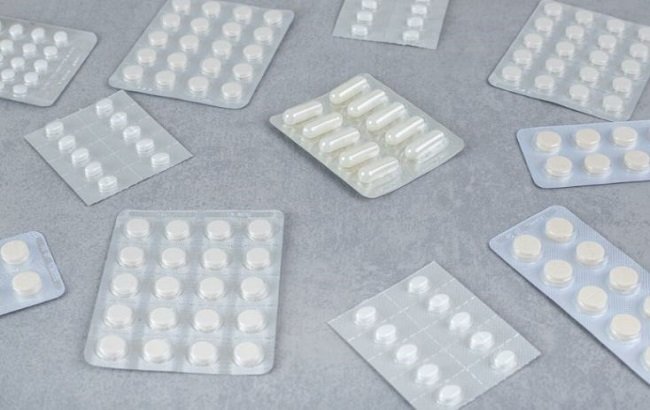If you’ve ever wondered, can you take paracetamol with antibiotics, you’re not alone. This is a common question, especially when dealing with infections and their accompanying symptoms, such as fever or pain. Paracetamol is a go-to medication for reducing fever and relieving pain, while antibiotics are essential for combating bacterial infections. But what happens when you need both? Let’s dive into this topic and uncover five crucial facts to help you make informed decisions.
1. Yes, You Can Take Paracetamol with Most Antibiotics
The good news is that, in most cases, you can safely take paracetamol alongside antibiotics. These two medications serve different purposes and generally don’t interfere with each other. Paracetamol works by reducing fever and alleviating pain, while antibiotics target the bacteria causing the infection.
When It’s Safe:
- Common Antibiotics: Medicines such as amoxicillin, azithromycin, and doxycycline don’t interact negatively with paracetamol.
- Standard Dosages: As long as you adhere to the recommended doses, combining these two is safe.
Exceptions:
Certain antibiotics, like isoniazid or rifampin, may pose risks for individuals with liver conditions, as these antibiotics can put additional strain on the liver. If you’re on any of these, consult your doctor before adding paracetamol to your regimen.
2. Dosage Matters: Stick to the Recommended Amounts
Taking more than the prescribed amount of either medication can lead to serious health issues. Here’s how to stay safe:
- Paracetamol Dosage: Adults can usually take 500-1000 mg every 4-6 hours, with a maximum of 4000 mg per day.
- Antibiotic Dosage: Always follow your doctor’s instructions or the label’s guidelines.
Key Points to Remember:
- Overdosing on paracetamol can cause liver damage.
- Skipping or improperly timing antibiotic doses can reduce their effectiveness and lead to antibiotic resistance.
Pro Tip: Use a medication tracker app to ensure you take your doses on time and avoid accidental overdoses.
3. Consider Your Medical History and Current Health
Your medical history plays a significant role in determining whether it’s safe to combine paracetamol and antibiotics.
Factors to Consider:
- Liver or Kidney Conditions: Both medications are metabolized in these organs. If they’re compromised, consult a healthcare provider.
- Alcohol Use: Drinking alcohol while taking paracetamol increases the risk of liver damage. Avoid alcohol until your treatment is complete.
- Pregnancy and Breastfeeding: While paracetamol and many antibiotics are generally safe during pregnancy, always double-check with your doctor.
Practical Tips:
- Share your full medical history with your doctor.
- Inform them about all medications and supplements you’re taking.
- Ask specific questions about potential interactions if you’re unsure.
4. Be Aware of Side Effects and Potential Interactions
While paracetamol and antibiotics are generally safe when taken together, you should still be vigilant about possible side effects.
Common Side Effects:
- Paracetamol: Overuse can lead to nausea, dizziness, or liver problems.
- Antibiotics: Stomach upset, diarrhea, and mild rashes are common.
Rare But Serious Reactions:
- Allergic reactions, such as severe rash or swelling.
- Persistent nausea or abdominal pain could indicate liver strain.
If you experience these symptoms, contact a healthcare professional immediately. External resources like How Many Camels Am I Worth offer lighthearted distractions while dealing with health concerns.
5. Can You Take Paracetamol with Antibiotics? Tips for Using Them Together
To make the most of your medications while minimizing risks, follow these tips:
- Space Out Doses: Taking paracetamol and antibiotics a few hours apart can help reduce stomach irritation.
- Stay Hydrated: Drinking plenty of water supports your body’s ability to process medications.
- Complete Your Antibiotic Course: Even if you feel better, finishing your prescribed antibiotics prevents the infection from returning or developing resistance.
Quick Checklist:
- Have you read the information leaflets for both medications?
- Are your doses properly timed and measured?
- Do you have a plan to avoid missed doses?
Remember: When in doubt, always reach out to a healthcare provider for advice tailored to your specific situation.
FAQs About Taking Paracetamol with Antibiotics
1. Can children take paracetamol with antibiotics? Yes, but the dosages should be adjusted based on their age and weight. Always consult a pediatrician.
2. Can paracetamol reduce the effectiveness of antibiotics? No, paracetamol does not affect how antibiotics work. They function independently in the body.
3. What should I do if I miss a dose of antibiotics? Take the missed dose as soon as you remember, unless it’s close to the next scheduled dose. Never double up.
4. Can I drink alcohol while taking these medications? It’s best to avoid alcohol. Combining it with paracetamol can increase the risk of liver damage.
5. Is it necessary to take paracetamol with food while on antibiotics? While not always required, taking paracetamol with food can help reduce stomach discomfort, especially if you’re prone to gastric issues.
Final Thoughts
So, can you take paracetamol with antibiotics? For most people, the answer is a reassuring yes. However, staying informed about dosages, potential interactions, and your health history is essential for safe use. When in doubt, consult a healthcare provider to tailor advice to your specific needs.
By following these guidelines, you can safely manage symptoms like fever and pain while fighting off bacterial infections. And if you’re looking for a quick mental break, explore How Many Camels Am I Worth for a fun diversion. Take care, stay safe, and remember—your health comes first!
You May Also Like:





